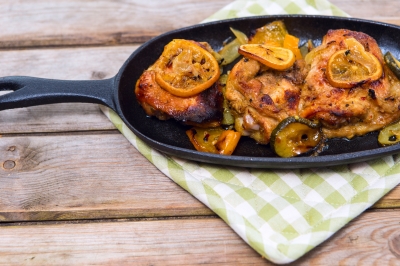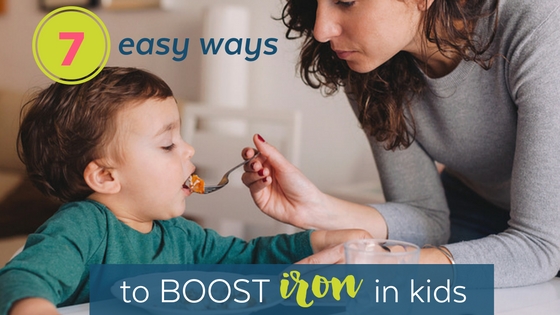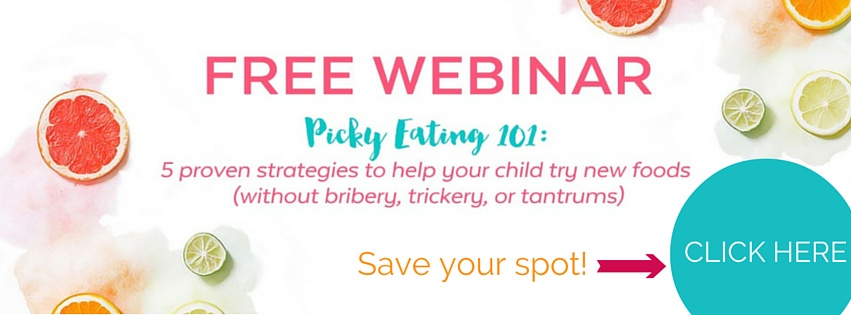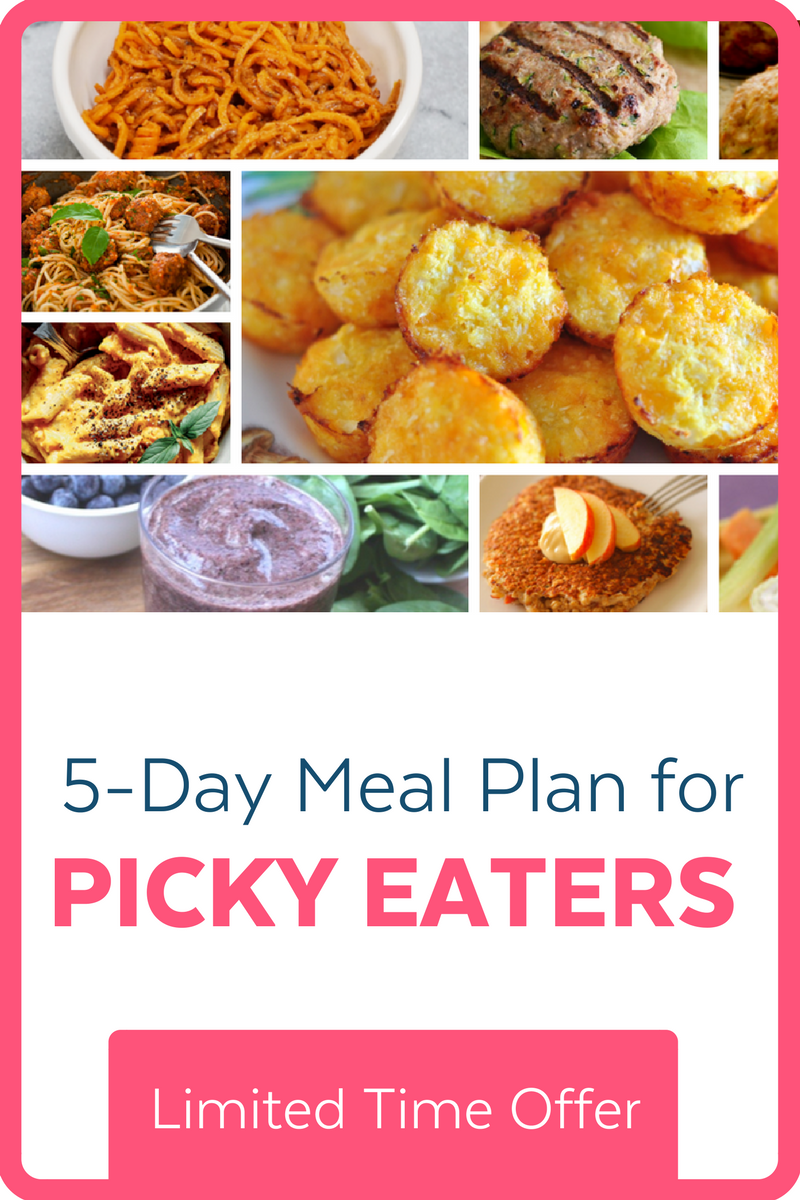Nutrition is always top of mind for moms, particularly when it comes to their little ones. One of the most common concerns is a child’s iron intake and whether our kids are getting enough. Because we don’t have enough to worry about already right?!
Iron deficiency was something I constantly worried about with my first daughter, Sienna because she had a few of the risk factors for anemia; not only was she a low birth weight baby, she was also born with a congenital heart defect and had two surgeries as a result (where blood loss was a factor). Yes, it was a crazy first year for all of us!

Sienna was also an extremely picky eater and ate sooooo little (I mean a few blueberries would suffice as a meal sometimes). So it was a given that she wasn’t getting enough iron through her diet.
Thus began the vicious cycle. Iron deficiency (among other things) is connected to appetite suppression; with a low appetite she wasn’t getting enough of anything, including iron.

It wasn’t until we made some critical changes at meals that things improved. Dramatically. They improved so much that her nutrition status was (and is) no longer a concern for her doctors or for her nutritionist mom. It was so freeing to be able to sit down at a meal and not push her to eat.
I share some of these simple yet super-important strategies in my free webinar for parents. Click below to learn more:
Why do they need iron anyway?
An infant’s iron stores decline around 6 months of age and studies show that at least one in eight toddlers is anemic before they are 2 years old. That’s not a small number. That’s why there’s a focus on boosting your child’s iron intake.
While iron deficiency tends to diminish appetite, the risks for our kiddos do not stop there. Iron deficiency in the first years of life has also been linked back to cognitive, motor, and behavioral deficits (Lozoff et al. 2006). So there are lots of good reasons to keep an eye on iron.
How much iron do kids need daily?
- 6-12 months: 11 mg
- 1-3 years: 7 mg
- 4-8 years: 10 mg
- 9-13 years: 8 mg
How to boost a child’s iron intake:
And finally, the moment you’ve been waiting for. How to improve our little one’s intake of iron, with a few simple tricks.
1 – Add some Vitamin C
When sources of Vitamin C are paired with iron containing foods, iron absorption improves. Some good ones are melon, strawberries, kiwi, mango, pineapple, broccoli, tomatoes and leafy greens. So think of things like chili with tomatoes and meat, or mango salsa with chicken, or lentil stew with tomatoes. No shortage of options here!

2 – Opt for heme iron
Let me give you some “Nutrition 101” for a moment when looking at boosting your child’s iron intake So, there are two types of iron sources:
- Heme Iron – from an animal source which is much more absorbable in the body (meats, eggs, etc)
- Non-Heme Iron – from non-animal sources which is less absorbable (legumes, vegetables, etc)
Some kids tend to shy away from meat (heme sources of iron) which is totally fine, as long as they are getting adequate amounts through other sources. It helps to know that pairing nonheme iron with other iron foods also improves absorption.
3 – Cook in cast iron
You’ll get the best results by cooking moist, acidic foods like applesauce, chili, tomato sauce, stew, and scrambled eggs in the cast iron cookware which essentially ‘leaches’ iron from the pan. One study illustrated that the iron in spaghetti sauce increased by 2,109 percent (from 0.35 mg/100g to 7.38 mg/100g), while other foods increased less dramatically.  On the flip side, you also don’t want to overdo it and use a cast iron pot for every meal of every day.
On the flip side, you also don’t want to overdo it and use a cast iron pot for every meal of every day.
4 – Limit phytates
Limit foods rich in phytates which can reduce iron absorption by up to 80% (includes plant-based foods such as nuts, seeds, grains, and some vegetables). Phytates or phytic acids can bind to zinc, iron, and other minerals decreasing their absorption.
Here are two tips: (1) soak nuts, legumes, etc. to reduce the amount of phytates consumed with these foods or (2) pair vitamin C with these foods to help counteract the effect. (Source)
5 – Avoid dairy products
The calcium in dairy products including milk, yogurt, and cheese can inhibit the absorption of iron, particularly when iron and calcium food sources are being eaten at the same time. All you have to do is space things out and consume/offer dairy a few hours before or after having iron-rich foods. For children between 1 and 5 years old, it also helps to limit their milk intake to no more than 24 ounces per day.
6 – Aim for daily intake
To ease your mind, try to aim for at least two sources of iron per day (using the tips here for an extra boost). Have a look below as well for some of the best iron-containing foods.
7 – Choose dark meat
Meats are generally great sources of iron, although you’ll get an extra bang for your buck if you choose dark meat over lighter parts. For instance, a 3-ounce serving of roasted dark meat turkey contains 2 mugs of iron, compared to only 1.1 msg found in the light-meat variety. In my opinion, dark meat tastes so much better too!
What are some great sources of iron for kids?
You can find a more extensive list here.
- Ground beef (2.5 oz) — 1.3 to 2.2 mg
- Chicken liver (2.5 oz) — 6.2 to 9.7 mg
- Lentils (1/2 cup, canned) — 3.2 mg
- Eggs (1 egg yolk) — 0.46 mg
- Cooked Spinach (1/4 cup) — 1.6 mg
- Fortified oatmeal (5 Tbsp) — 3.66 mg
Can they get enough iron in one day?
If you’re wondering what a sample meal would look like for your little one, have a look! Getting sufficient iron isn’t so tough unless you have a limited or picky eater. I’ve also included some examples of how to bring Vitamin C into the meal to give their iron absorption a nice little boost.
What should the goal be?
While we have our children’s nutrition on our minds (and rightly so!), with a selective or limited eater it’s about more than just nutrition. Yes, you just heard me (a Certified Nutritionist) say that out loud. I learned this the harder way.
I know how desperate we are to get that piece of chicken or a green veggie into their belly. Whether it’s more iron, more protein, or just more food in general.
Although, the priority should really be to make eating fun and enjoyable for our kids. As we do, the nutrition will follow. A win-win.
That’s exactly what parents learn in my Free Online Webinar (10 proven strategies to encourage your child to try new foods). Save your spot for the next one here.
Image credit (meat): Carnivore Style








